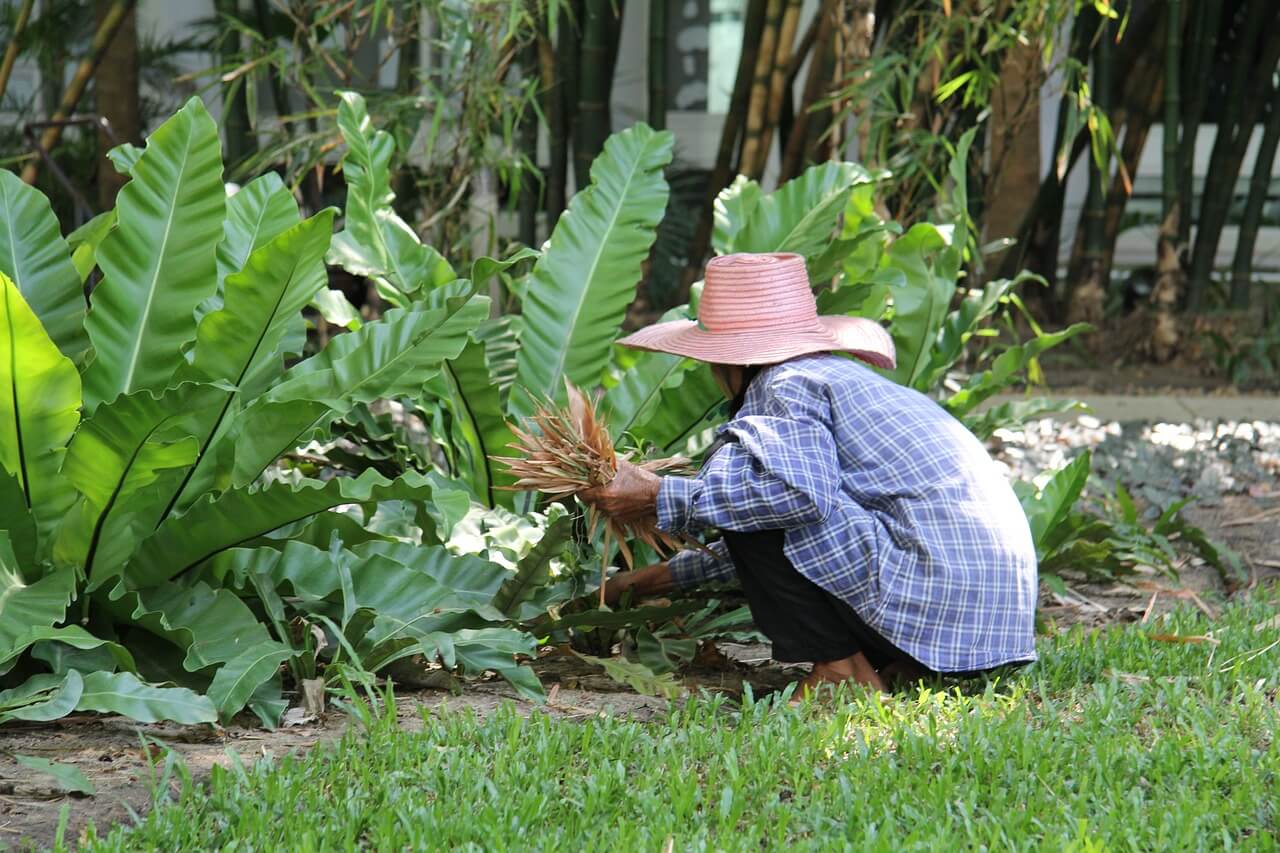A well-maintained garden is more than just an outdoor space—it’s a sanctuary for relaxation, a visual delight, and a source of pride for homeowners. Whether you’re an experienced green thumb or a beginner gardener, keeping your garden healthy and beautiful requires time, attention, and the right techniques.
In this guide, we’ll explore the best garden maintenance tips and methods to help you maintain a vibrant, thriving garden all year round. From lawn care to seasonal planting, watering strategies to pest control—these tips will help your outdoor space bloom with life.
1. Know Your Soil Type
Table of Contents
Before planting anything, understand the type of soil in your garden. Soil quality directly affects how well your plants will grow.
🧪 Types of Soil:
-
Sandy Soil: Drains quickly but lacks nutrients
-
Clay Soil: Holds water well but may compact and suffocate roots
-
Loamy Soil: Ideal for most gardens—rich, balanced, and nutrient-dense
Latest gardening tools: the commitment and success of professional cleaning companies is evident by offering you efficient maintenance in the shortest time. This is due to the implementation of the latest technology tools that optimize the development of each cleaning and offer you results without imperfections.
✅ Tip:
Test your soil with a DIY kit or hire a local garden center to analyze its pH level and nutrient composition. Add compost or organic matter to improve its quality.
2. Water Smart, Not Hard
Overwatering is just as harmful as underwatering. Different plants have different watering needs. Learn how and when to water properly.
💧 Watering Tips:
-
Early morning is the best time to water to prevent evaporation.
-
Use drip irrigation or soaker hoses to target roots directly.
-
Check the soil moisture before watering—if it’s damp 1 inch below, skip watering.
🚫 Avoid:
-
Watering leaves directly, which can encourage fungal diseases.
-
Watering daily (unless during extreme heat); most gardens do well with 2–3 deep waterings per week.
Within the steps to carry out an effective garden cleaning, lawn maintenance must be taken into account. It is recommended that it be cut from time to time to keep it in good condition.
3. Master Seasonal Gardening
Plants grow and behave differently based on seasons. Align your gardening efforts with the seasons for optimal results.
🌸 Spring:
-
Begin planting annuals and perennials.
-
Fertilize lawns and prune flowering shrubs.
☀️ Summer:
-
Focus on irrigation and pest control.
-
Mulch beds to retain moisture.
🍁 Fall:
-
Plant bulbs for spring blooms.
-
Rake leaves and compost them.
❄️ Winter:
-
Protect sensitive plants with covers.
-
Clean and store tools properly.
4. Mulch for Moisture and Weed Control
Mulching is one of the simplest and most effective garden maintenance practices. It conserves moisture, regulates soil temperature, and suppresses weeds.
🌿 Mulch Options:
-
Organic: Bark, straw, compost, leaves
-
Inorganic: Pebbles, landscape fabrice
✅ Tip:
Apply 2–3 inches of mulch around plants but keep it 1 inch away from stems or trunks to prevent rot.
The state of your garden talks a lot about your passion. Take advantage of a comprehensive lawn and garden maintenance to meet your needs and exceed your expectations, regardless of the situation or the time of year.
5. Regular Pruning and Deadheading
Pruning keeps your plants in shape, encourages new growth, and removes dead or diseased branches.
✂️ Pruning Basics:
-
Deadheading (removing spent flowers) promotes more blooms.
-
Cut back overgrown shrubs in late winter or early spring.
-
Use sharp, clean tools to prevent plant stress or infection.
6. Keep Pests and Diseases in Check
Healthy gardens can still fall victim to pests and diseases. Early detection and prevention are key.
🐛 Common Garden Pests:
-
Aphids
-
Slugs and snails
-
Whiteflies
-
Caterpillars
🧴 Natural Solutions:
-
Neem oil spray
-
Dish soap and water for aphids
-
Diatomaceous earth for slugs
-
Introduce ladybugs or beneficial insects
🌱 Disease Prevention:
-
Avoid overcrowding plants
-
Water at the base to avoid wet leaves
-
Rotate crops in vegetable gardens annually
7. Fertilize Wisely
Plants need nutrients to grow—but over-fertilizing can burn roots and disrupt soil balance.
🧪 Types of Fertilizers:
-
Organic: Compost, manure, bone meal, fish emulsion
-
Synthetic: Commercial granular or liquid fertilizers
✅ Tip:
Use slow-release organic fertilizers for sustainable feeding. Apply according to plant type and season. Always read product labels carefully.
8. Weed Control: A Continuous Job
Weeds compete with your plants for nutrients, light, and water. Stay on top of them to prevent overgrowth.
🌿 Best Practices:
-
Pull weeds by hand when soil is moist.
-
Use hoeing or hand tools for small areas.
-
Apply pre-emergent weed control in spring.
✅ Tip:
Mulching also reduces weed growth significantly.
9. Create a Garden Maintenance Schedule
Consistency is key. Having a schedule ensures you don’t forget essential tasks.
📅 Weekly Checklist:
-
Water deeply (2–3 times depending on weather)
-
Remove dead flowers and fallen leaves
-
Weed small patches
📅 Monthly Checklist:
-
Check soil and mulch levels
-
Inspect plants for pests or disease
-
Fertilize if needed
📅 Seasonal Tasks:
-
Adjust plant care based on the time of year
-
Clean and maintain garden tools
-
Update your planting list and layout
10. Maintain Your Lawn the Right Way
If your garden includes a lawn, it deserves just as much care.
🌱 Lawn Tips:
-
Mow regularly and don’t cut more than one-third of grass height
-
Water deeply but less frequently
-
Aerate in spring or fall to improve root growth
11. Encourage Pollinators and Wildlife
Gardens thrive when pollinators like bees and butterflies are around.
🐝 How to Attract Them:
-
Plant flowering herbs like lavender, thyme, and basil
-
Avoid chemical pesticides
-
Provide water sources and shelter
12. Use Raised Beds or Containers for Better Control
For smaller spaces or better soil control, try raised beds or pots.
🪴 Benefits:
-
Easier weed control
-
Better soil drainage
-
Less bending for gardeners with mobility issues
13. Practice Companion Planting
Some plants grow better when planted near others. Companion planting helps with pest control, pollination, and improving crop yields.
🌻 Examples:
-
Basil with tomatoes
-
Marigolds with vegetables
-
Beans with corn
14. Invest in the Right Tools
Using the right garden tools makes tasks easier and faster.
🧰 Must-Have Tools:
-
Trowel and pruners
-
Watering can or hose with nozzle
-
Gardening gloves
-
Rake and hoe
-
Wheelbarrow
Keep them clean, dry, and sharpened regularly.
15. Stay Educated and Inspired
Gardening is always evolving. Stay updated by:
-
Reading garden blogs or books
-
Joining local gardening clubs
-
Watching YouTube gardening channels
-
Visiting botanical gardens for ideas
Frequently Asked Questions (FAQs)
❓ How often should I water my garden?
It depends on the season, soil, and plants. A general rule is to water deeply 2–3 times per week rather than shallow daily watering.
❓ What’s the best way to improve soil quality?
Add compost, manure, or organic fertilizers. Regular mulching also helps retain moisture and feed the soil.
❓ How do I get rid of pests without chemicals?
Use natural sprays like neem oil, introduce beneficial insects, and practice crop rotation to prevent infestations.
❓ Is it necessary to prune plants regularly?
Yes. Pruning helps shape plants, remove dead or diseased parts, and promote healthy new growth.
❓ Can I garden without a lawn?
Absolutely. Container gardens, vertical gardens, or raised beds are great alternatives that offer full gardening experiences.
Conclusion
Maintaining a beautiful garden isn’t about having a green thumb—it’s about consistency, observation, and applying the right techniques at the right time. By following these garden maintenance tips, you can create an outdoor space that’s not only beautiful and healthy but also rewarding to care for.
Start small, build your knowledge, and watch your garden flourish.

